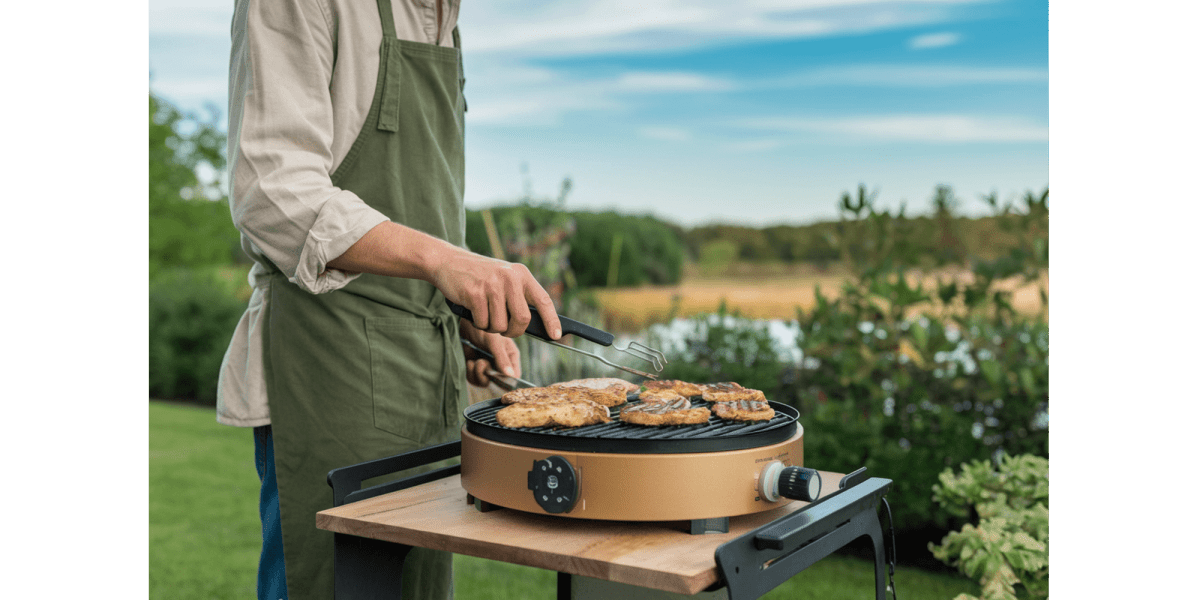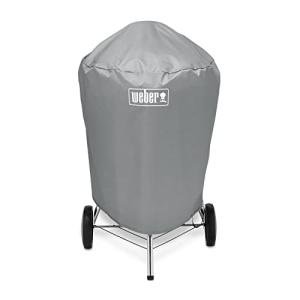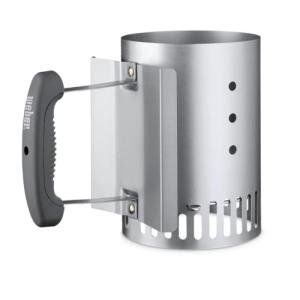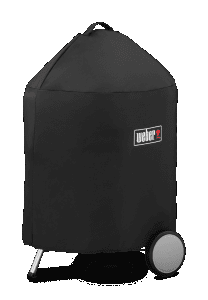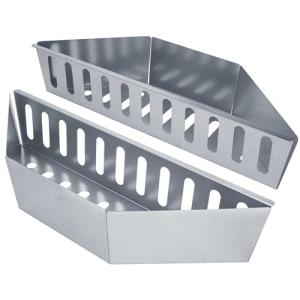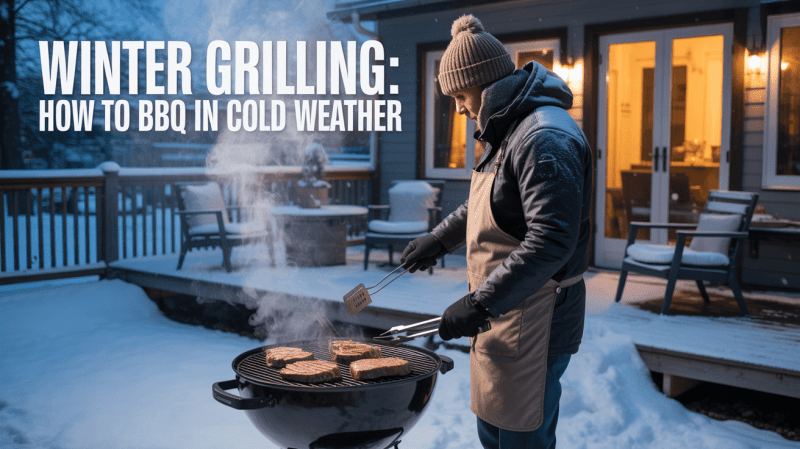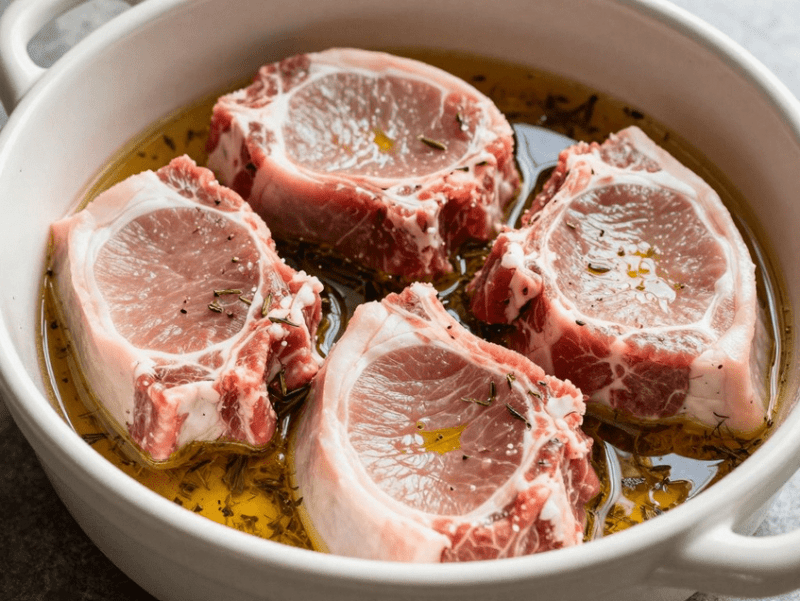Grilling on an electric grill is an excellent way to easily enjoy outdoor cooking. To grill effectively on an electric grill, start by preheating it for optimal results. This method saves time and ensures that your food cooks evenly. Whether I'm preparing vegetables, meats, or fish, mastering the art of electric grilling opens up a world of delicious possibilities.

Setting up your electric grill is key to a successful cooking experience. I find that placing it on a stable surface, close to a power source, protects it from the elements while allowing for safe operation. Preheating and adjusting the temperature according to the type of food being grilled can make a substantial difference in flavor and texture. When I follow these steps, the results are always satisfying.
Maintaining my grill is as important as grilling itself. Regular cleaning and troubleshooting help keep my grill in top shape for tasty meals. By understanding how to use an electric grill effectively, I can ensure that every cooking session is enjoyable and delicious.
Key Takeaways
- Preheat your electric grill for best cooking results.
- Choose a stable location and protect your grill from the weather.
- Regular maintenance keeps your grill performing well.
Understanding Electric Grills
Electric grills are a convenient and efficient way to enjoy grilled food indoors or outdoors. They come in various types with distinct advantages compared to gas and charcoal grills. I’ll explore these types and their benefits to help you make an informed choice.
Types of Electric Grills
There are several types of electric grills to consider:
-
Tabletop Grills: Compact and portable, perfect for small spaces. They are great for apartments or picnics.
-
Contact Grills: These cook food quickly by using two heated plates. They are easy to use for sandwiches and burgers.
-
Indoor Grills: Designed for home use, indoor grills often have non-stick surfaces and drip trays for easy cleanup.
-
Outdoor Grills: These are larger models meant for patios and can handle bigger cooking tasks. They can reach high temperatures and often have temperature controls.
Each type serves different needs, so I recommend evaluating your space and cooking style before choosing.
Advantages Over Gas and Charcoal
Electric grills offer several benefits when compared to gas and charcoal options:
-
Ease of Use: I plug in the grill and it’s ready to use. There’s no need for gas tanks or charcoal, which can be messy.
-
Temperature Control: Electric grills provide precise control over cooking temperatures. This helps in grilling meats and vegetables perfectly.
-
Indoor Cooking: I can use electric grills indoors without worrying about smoke. This is a significant benefit for those living in apartments.
-
Safety: They produce less risk of flare-ups compared to gas and charcoal. I feel more comfortable using them, especially around children.
In summary, electric grills provide convenience and safety, making them a smart choice for many cooking needs.
Setting up Your Electric Grill

When setting up an electric grill, it is important to choose the right location, assemble it properly, and understand its wattage and heat settings. Each factor plays a crucial role in ensuring efficient and safe grilling experiences.
Choosing the Right Location
I always start by picking a suitable spot for my electric grill. It's best to choose a flat and stable area. Avoid places near flammable materials like wood or plastic.
Make sure there’s enough space around the grill for ventilation. I keep it at least three feet away from walls or any obstacles. This helps avoid overheating and allows smoke to disperse without issues.
If I’m grilling outdoors, I avoid windy areas, as this can affect heat distribution. Lastly, if I’m indoors, I ensure to use the grill in a well-ventilated area to prevent smoke build-up.
Assembling Your Grill
Setting up my electric grill is straightforward. First, I refer to the manufacturer's instructions to ensure I do it right. I often begin with the grill base, following the given steps closely.
After that, I attach the heating element. This component usually plugs into the main body of the grill. I make sure it fits securely. Some grills come with additional pieces like a drip tray that collects excess grease.
Once assembled, I check all connections and ensure everything is snug. I also give the grill a quick wipe with a damp cloth to remove any dust from the packaging. This ensures a clean cooking surface before I start grilling.
Understanding Wattage and Heat Settings
Knowing the wattage of my electric grill is essential for effective cooking. Most electric grills range from 1000 to 1800 watts. Higher wattage means faster heating, which can be helpful for grilling.
I often look for features like adjustable heat settings, which allow me to control cooking temperatures. Typically, I use lower settings for vegetables and higher settings for meats.
The heating element plays a crucial role in even cooking. I ensure it covers the grill surface adequately to prevent hot or cold spots. By understanding these factors, I can make the most out of my grilling experience.
How to Grill Effectively
To get the best results on an electric grill, it’s important to focus on preheating, the right cooking techniques, and managing grease effectively. These steps will help me achieve great flavor while keeping the grill clean.
Preheating the Grill
Preheating is a critical step for effective grilling. I always heat my electric grill on High Heat for about 10-15 minutes before cooking. This helps to ensure even cooking and better searing.
During preheating, I check the temperature indicator if available. If not, I can test it by flicking a few drops of water on the grill. If they sizzle and evaporate quickly, the grill is ready.
A well-preheated grill also reduces sticking, making it easier to flip food without it falling apart. I take my time with this step to get the best results.
Cooking Techniques
Using the right cooking techniques can greatly enhance my grilling. I make sure to arrange food on the grill without overcrowding. This allows for better air circulation and even cooking.
I often vary the temperature settings based on what I'm cooking. For instance, meats like chicken or steak benefit from higher heat, while vegetables can cook well at a lower setting.
Turning food at the right times matters too. I avoid flipping items too often, as this can lead to uneven cooking. I aim for a nice sear before turning.
Using a Drip Tray
Using a drip tray is essential for managing grease and ensuring safety. I place a drip tray under the grill to catch excess grease and food particles.
This tray prevents flare-ups and makes cleanup easier. After grilling, it’s simple to remove the tray and dispose of its contents. I find this step keeps my grill in better shape.
In addition, a clean grill surface keeps flavors intact. I always make sure to empty and clean the drip tray regularly to maintain the quality of my food.
Maintaining and Troubleshooting
Regular upkeep of my electric grill is essential for optimal performance. Addressing issues promptly can extend the life of my grill and improve cooking results.
Regular Maintenance
I follow a simple maintenance routine to keep my electric grill functioning well. After each use, I clean the cooking surface with a damp cloth to remove grease and food particles. This helps prevent sticking and enhances flavor.
I preheat the grill before cooking, which improves the texture of the food. It's also vital to periodically check the power cord and plug for any signs of wear. If I notice anything unusual, I stop using the grill immediately.
I maintain the grates by brushing them with a stainless steel brush after each use. This keeps them clean and ready for the next grilling session.
Addressing Common Issues
If my electric grill isn't heating properly, the first step is to check the power outlet. I ensure that it's functioning and the grill is correctly plugged in.
Sometimes, uneven cooking occurs. I adjust the food placement on the grill to distribute the heat evenly. This usually helps solve the issue.
If smoke comes from the grill, I inspect the grates for leftover food or grease. Cleaning these surfaces often resolves the problem.
For my T-fal grill, I refer to the user manual to troubleshoot specific issues. Most common problems have suggested solutions, which I find very useful.
Contacting Customer Service
When I encounter a problem that I can't fix, I contact customer service. T-fal offers support through its website and phone lines. I find its representatives knowledgeable and helpful.
Before I contact them, I gather important information, like the model number and a description of the issue. This helps speed up the process.
I always mention whether my grill is still under warranty. T-fal customer service can assist with repairs or replacements as needed.
Frequently Asked Questions
In this section, I will address common queries about using an electric grill, covering preheating steps, outdoor usage, tips for better grilling, the importance of oiling grates, limitations compared to other grills, and whether to keep the lid closed while cooking.
What are the steps for preheating an electric grill?
To preheat an electric grill, I plug it in and set the temperature to medium or high. It takes about 10-15 minutes to reach the desired heat. During this time, I ensure the grill plates are clean and ready for cooking.
Can you use an electric grill for outdoor cooking, and if so, how?
Yes, I can use an electric grill outdoors with a proper power source. I set it up on a stable surface and ensure it's sheltered from rain or strong winds. Using an extension cord rated for outdoor use is important to maintain safety.
What tips can help achieve the best grilling results on an indoor electric grill?
I always preheat the grill for the best results and avoid overcrowding the cooking surface. I use thinner cuts of meat for quicker cooking and ensure even distribution for better heat circulation.
Is applying oil to the grates necessary before grilling on an electric grill?
Applying oil to the grates is not strictly necessary, but it helps prevent sticking and ensures easier cleanup. I often use a paper towel dipped in cooking oil to lightly coat the grill before I start cooking.
What are some common limitations or cons of using an electric grill compared to other types?
Electric grills tend to have less heat intensity than charcoal or gas grills. They may not achieve the same level of char or smoky flavor that some other grills can offer. Additionally, they require access to electricity.
Why should the lid be closed while cooking on an electric grill?
Yes, I should close the lid while cooking to trap heat and smoke. This helps cook the food evenly and prevents the grill elements from losing heat quickly, making the cooking process more efficient.
DISCLAIMER
This document is provided for general information purposes only and should not be relied upon as providing legal advice, technical, or specific operational guidance to the reader, whether as to the practices described in the document or the applicable legal requirements and regulations. backyardgrillingpros.com expressly disclaims any responsibility for liability arising from or related to the use or misuse of any information in this document.
